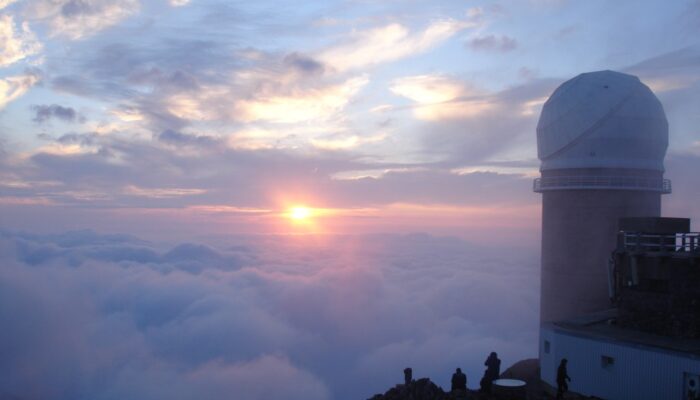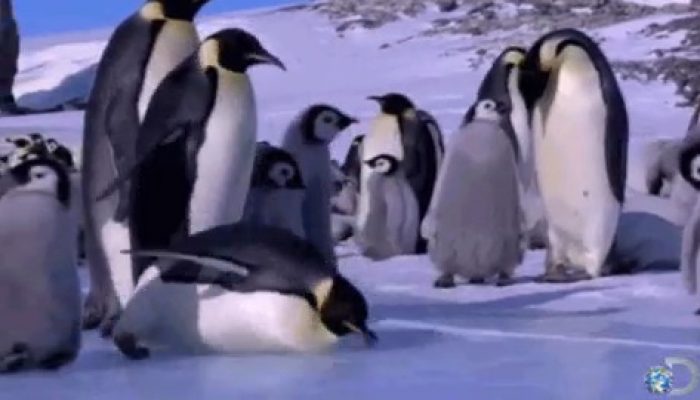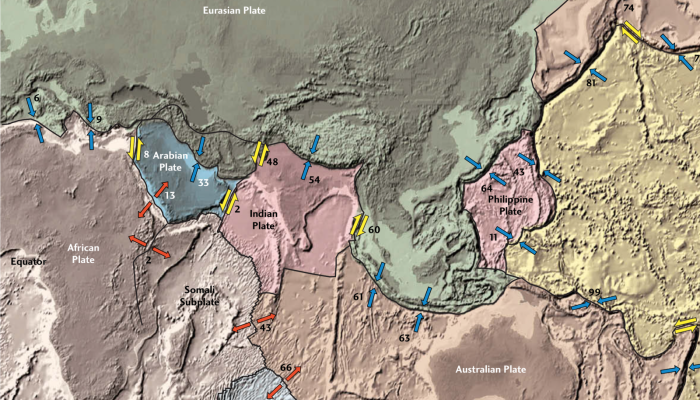At sunset, the light travels a longer path in the atmosphere to reach our eyes than when the sun is high in the sky. At this time of the day, the light is more subject to scattering, as it interacts with more air (molecules and particles) before reaching our eyes, which explains why the sun is much less luminous and can be observed directly without being dazzled. The sun appears redder because amo ...[Read More]
GeoLog
GeoPolicy: getting ready for the European Parliament Election
The European Parliament currently has 751 members who belong to one of the eight political groups, at least one of the 20 different committees and represent approximately 500 million people from the 28 EU Member States. The EU Parliament plays an extremely important role in the EU. It oversees the EU budget, launches investigations into specific issues and shares legislative powers with the Counci ...[Read More]
Cryospheric Sciences
Image of the Week – Why is ice so slippery?
Having spent most of my life in places where the temperature hardly ever falls below zero, my first winter in Sweden was painful. Especially for my bum, who met the ice quite unexpectedly. Reading the news this week, from reports of emergency services overwhelmed after so many people had slipped to a scientific study on how no shoes have a good enough grip, via advice on how to walk like a penguin ...[Read More]
Seismology
AGU 2018
The AGU Fall Meeting: that other large geosciences meeting in the world. As every year, thousands of people burned their yearly share of carbon flying across the globe. Just like last year, the meeting was held on the East coast – but instead of balmy New Orleans, we found ourselves in somewhat chilly Washington DC. For those coming from Europe, this meant slightly less travel (as well as a slight ...[Read More]
GeoLog
Do’s and don’ts for attending your first General Assembly
The prospect of attending a large international conference during your PhD can be really daunting, especially if you’re only in your second year and in the early stages of data collection. That’s why I hadn’t planned on going to one until my third year. But thanks to winning some travel funds, this time last year I was preparing to attend the EGU General Assembly 2018 in Vienna, a scary but exciti ...[Read More]
Geodynamics
Tomography and plate tectonics
The Geodynamics 101 series serves to showcase the diversity of research topics and methods in the geodynamics community in an understandable manner. We welcome all researchers – PhD students to Professors – to introduce their area of expertise in a lighthearted, entertaining manner and touch upon some of the outstanding questions and problems related to their fields. For our first ‘Geodynami ...[Read More]
Tectonics and Structural Geology
Meeting Plate Tectonics – Walter Roest
These blogposts present interviews with outstanding scientists that bloomed and shape the theory that revolutionised Earth Sciences — Plate Tectonics. Get to know them, learn from their experience, discover the pieces of advice they share and find out where the newest challenges lie! Meeting Walter Roest Walter Roest was born in Dordrecht, The Netherlands. He has had an impressive international c ...[Read More]
GeoLog
Winners of the EGU Best Blog Posts of 2018 Competition
There is no doubt that 2018 was packed full of exciting, insightful and informative blog posts. An impressive 382 posts were published across the EGU’s official blog, GeoLog, as well as the network and division blogs! In December, to celebrate the excellent display of science writing across the network and division blogs, we launched the EGU Blogs competition. From a list of posts selected by our ...[Read More]
GeoLog
Being a mentor at the General Assembly
With more than 15,000 participants, 4,700 oral presentations, 11,000 posters and 1,400 PICO presentations, the EGU General Assembly can be an overwhelming experience for any scientist, whether it’s your first time or 10th time attending. However, you can make conference networking a bit easier by signing up for the EGU 2019 Mentoring Programme! This mentoring scheme aims to facilitate new connecti ...[Read More]
Natural Hazards
Landslide forecasting and warning service in Norway
Today our blog will host Graziella Devoli who will tell us about the Landslide Forecasting and Warning Service currently operating in Norway by the Norwegian Water Resources and Energy Directorate (NVE). Graziella is Senior Geologist at NVE and she has PhD in Environmental Geology and Geohazards obtained at the University of Oslo (UiO) where she also teaches in the Geohazards master program. At NV ...[Read More]









